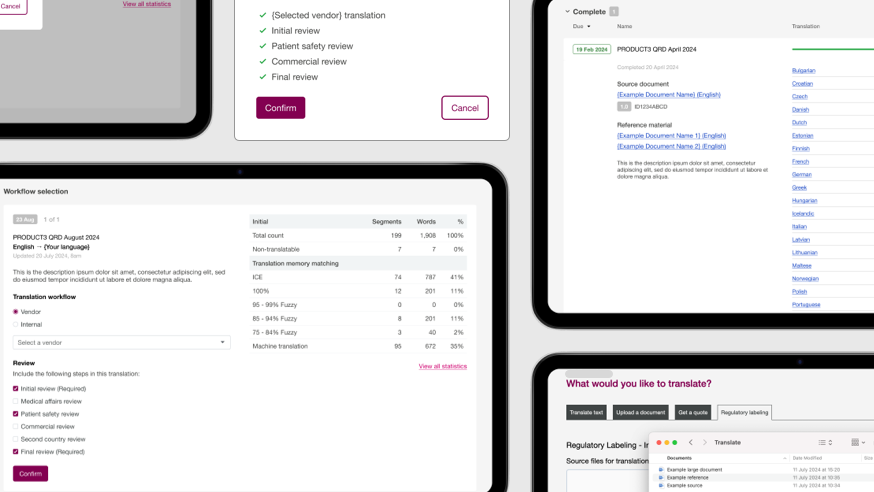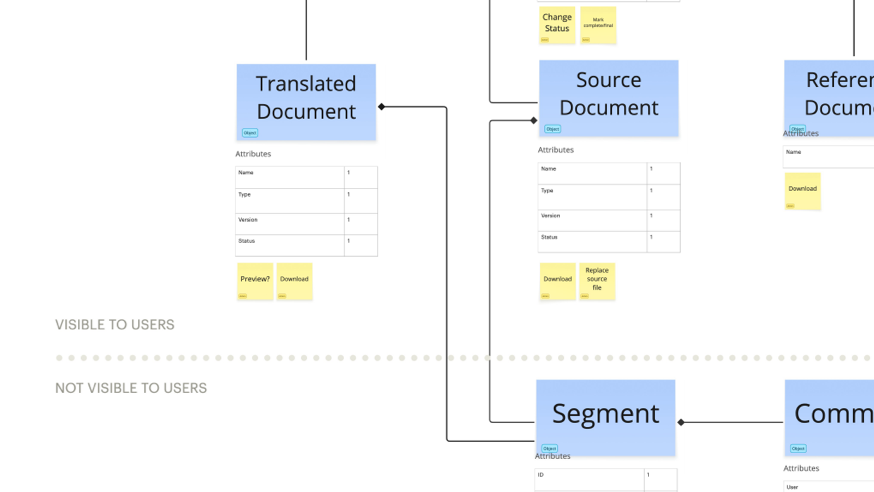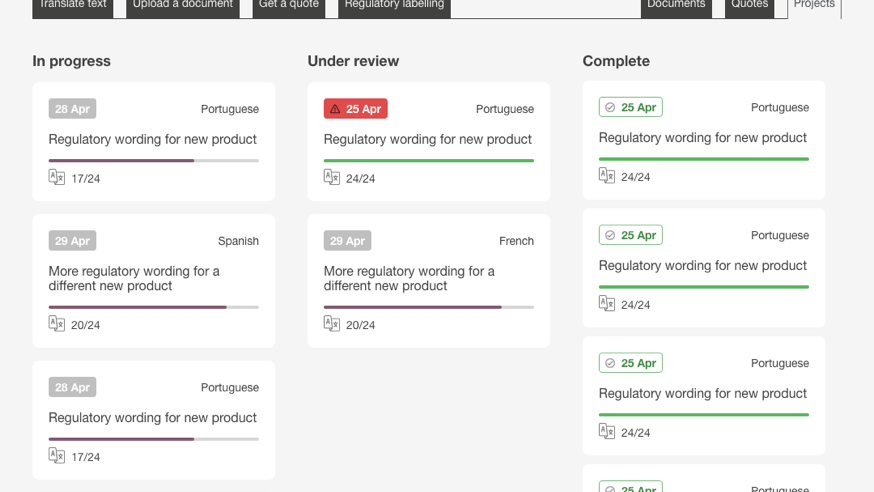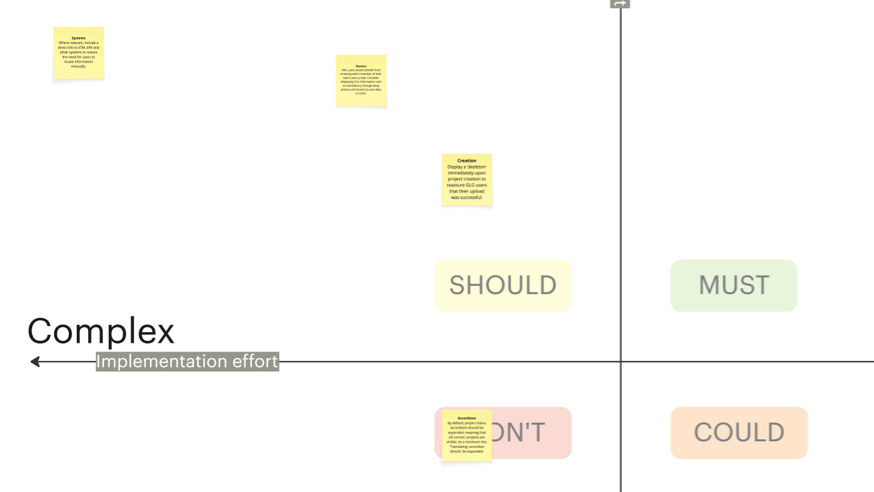AI-powered translation platform
2024
Pharmaceutical ∙ Artificial Intelligence
Summary
As a UX consultant, I led the design and research for a translation platform created to streamline the translation of regulatory pharmaceutical content across 27 European languages.
I was responsible for service design, UX/UI design, and user research, working closely with stakeholders to deliver an interface that addressed key user pain points. The MVP enabled users to translate 2,000-word documents in under three minutes and achieved a baseline usability score of 81.7%.

Challenge
The client needed to translate regulatory materials into local languages for every market they operated in. The process at the time was slow, manual, and required multiple layers of review and approval. Progress tracking was difficult, and translators spent excessive time on administrative tasks.
The core issue was too much manual work and too little visibility.
Goal
Use AI to streamline translation and introduce a centralised platform to manage the entire translation lifecycle. Success would reduce cost, improve delivery speed, and increase capacity to manage multiple product launches in parallel.
Research & discovery
The project began with both quantitative and qualitative research to understand how translations were being managed across regions.
Quantitative research
A 17-question survey was launched across markets to identify workflow patterns, bottlenecks, and reliance on third-party tools.
Qualitative research
Five two-hour focus group sessions were held with translation and regulatory teams across Europe. Using a future-state process map, participants were guided through early tool concepts to gather in-depth feedback.
Key findings
- Lack of visibility across projects
- Frequent rework and limited version control
- Too many people involved in repetitive tasks
- Missed deadlines due to inefficiencies

Personas
Two primary user groups were identified:
- Local users – responsible for translating content into their native language
- Global users – overseeing multilingual projects without directly performing translations
Empathy maps helped explore what these users think, feel, and struggle with. This reinforced the need for a centralised, intuitive tool offering transparency and accountability.

Ideation & design
To identify effective design patterns, I reviewed workflow management tools such as Jira, Asana, and Monday.com.
Information architecture
An Object Map was developed to visualise relationships between projects, users, and sentence-level translations — crucial in a context where precision is essential.

Wireframes & prototypes
Initial sketches evolved into mid-fidelity wireframes and later into interactive prototypes in Figma. These allowed testing of how Global users would monitor project progress while Local users focused on detailed translation tasks.
UI design
I built on the organisation’s internal design system for consistency, adding custom components as needed. Accessibility was validated using tools such as Stark.

Testing & validation
Remote moderated usability testing was conducted with 18 users across 16 European countries, representing both user types.
Test tasks
- Approving AI-generated translations
- Interpreting project statuses
- Navigating reviewer feedback
Key findings
- Many users ignored AI translation metrics — improved terminology and preview features were required
- Workflow interactions scored 4.25 / 5 for usability
- Local users found cross-market views confusing and preferred role-specific dashboards
- Users valued integration with external tools and suggested deep linking to third-party systems
Final product & impact
The final design included:
- A dashboard to track translation progress
- Role-specific user views
- Clear task indicators and progress states
- Comment threads and audit trails for compliance
Outcomes
- Average translation time reduced to under 3 minutes per document
- 27 languages supported at MVP
- 13 prioritised recommendations delivered for future improvement
- Baseline usability score: 81.7%
User feedback
The system is very user-friendly — I thought it might be confusing at, but it was actually very easy to use! I’d like to see an ‘action required’ label so it’s clear when there’s something for me to do.

Lessons learned
- Digital literacy varied widely, and some users resisted new workflows out of familiarity with old processes.
- Usability testing was invaluable for challenging stakeholder assumptions.
- After around five participants, new insights began to plateau.
A key challenge was persuading stakeholders to deprioritise non-essential features. Real user evidence made it easier to advocate for simpler, more focused design decisions.
Future steps
While the iteration was successful, there is room for continued improvement. Recommendations include refined role filtering, clearer task ownership indicators, and better terminology for translation metrics.
The long-term vision is a scalable, AI-powered translation system that significantly reduces time-to-market for regulated content.

Conclusion
This project allowed me to combine service design, user research, and interface design in a highly specialised context. It was deeply rewarding to design a product that not only met user needs but also supported an essential global process in the pharmaceutical industry.
Thank you for reading this case study. Please reach out if you’d like to see further examples of wireframes, personas, or design recommendations from the project.